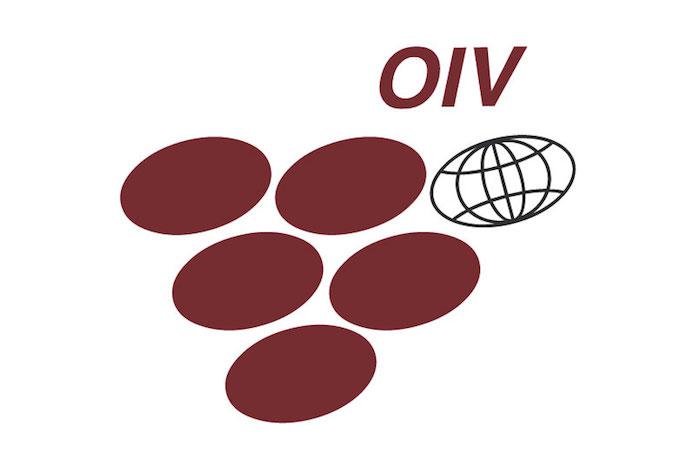OIV report on the world vitivinicultural situation
- Friday 04 November 2016
(OIV-Bento Gonçalves-24/10/2016) During the 39th World Congress of Vine and Wine, the Director General of the OIV, Jean-Marie Aurand, presented an overview of the vitivinicultural sector, as well as initial information from the thematic report devoted to the table grape and dried grape markets, which will be published at the end of the year.
The report covers the vitivinicultural production potential, areas under vines, global wine production and consumption, and wine import and export volumes.
- In 2015, the world area under vines rose to 7.5 mha.
- Global grape production reached 76 mt in 2015.
- 2016 world wine production (excluding juice and musts) is estimated at 259 mhl.
- World wine consumption in 2015 is estimated at 240 mhl.
Vineyard surface area
The size of the total world area under vines (regardless of the final destination of the grapes and including vineyards not yet in production) rose to 7.5 mha in 2015: a slight growth of 28 kha compared with 2014.
The Chinese area under vines continued to increase (+34 kha). China confirmed its position as the country with the second largest vineyard surface area. However, EU vineyards continued in a slight downward trend (-34 kha between 2014 and 2015). Spain remains a clear leader in terms of the cultivated surface area with over a million hectares (1.021 mha) ahead of China (0.83 mha) and France (0.78 mha).
Grapes
In 2015, the global grape production (grapes intended for all types of use) was 76 mt.
There has been an upward trend in grape production since 2000 (+17%), despite the decline in vineyard surface area. This decline may be explained mainly by a rise in yields, as well as the continual improvement of viticultural techniques.
China, with 12.6 mt, was the biggest producer in 2015 (17% of global grape production), followed by Italy (8.2 mt), the United States (7.0 mt) and France (6.3 mt).
Wine production
2016 world wine production (excluding juice and musts) is estimated at 259 mhl. This global wine production is therefore among the poorest in 20 years. The year 2016 was marked by adverse climate conditions, which affected production in various countries.
Italy (48.8 mhl) confirmed its position as the leading world producer, followed by France (41.9 mhl) and Spain (37.8 mhl). An even higher level of production was recorded in the United States (22.5 mhl). In South America, production dropped sharply in Argentine (8.8 mhl), Chile (10.1 mhl) and Brazil (1.4 mhl), as a consequence of unfavourable climate conditions.
Wine consumption
The data available showed a slight rise in global consumption in 2015, estimated at around 240 mhl.
The traditional consumer countries resumed their downward trend (or stagnation), to the advantage of new consumption areas. The period between 2000 and 2015 was characterised by a shift in wine consumption. Wine is increasingly consumed outside the country in which it is produced.
With 31 mhl, the United States confirmed its position as the biggest consumer country in the world. Consumption was relatively stable in Italy (20.5 mhl) and Spain (10 mhl), yet continued to erode in France (27.2 mhl) compared with that of 2014. The level of consumption in China is estimated at 16 mhl: a slight increase (+0.5 mhl) compared with 2014.
The international wine trade
In 2015, the world wine trade increased by 1.9% in terms of volume (104.3 mhl) and particularly in terms of value with a growth of 10.6 % (28.3bn EUR) compared with 2014.
The market is increasingly globalised: in 2000, 27% of wine consumed was imported, while today this market share is over 43%.
Special focus of the OIV on table grapes and dried grapes
The Director General of the OIV, Jean-Marie Aurand, also reviewed initial information from the thematic report on table grapes and dried grapes, which will be published at the end of the year. This report, drawn up in collaboration with the FAO (Food and Agriculture Organization of the United Nations), analyses the world market for grapes intended for direct human consumption (table grapes and dried grapes).
The grape is one of the most produced fruits in the world, with approximately 75 mt per year. Nearly half of grape production is vinified, 36% of grapes are consumed fresh and 8% are consumed in the form of dried grapes; the rest is intended for the production of fruit juice and must.
Abbreviations used:
kha: thousands of hectares
mha: millions of hectares
kt: thousands of tons
mt: millions of tons
khl: thousands of hectolitres
mhl millions of hectolitres
bn EUR: billions of euros




